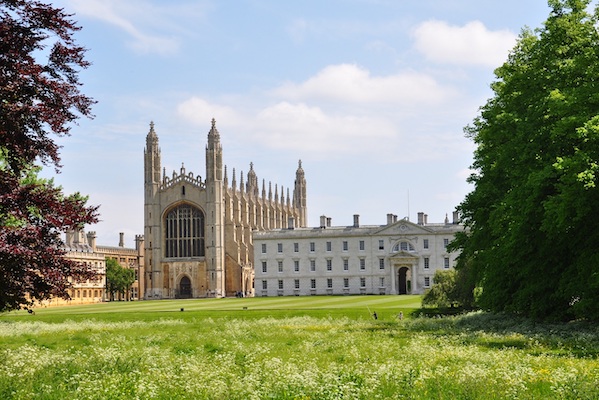King’s College’s plans to install photovoltaic (PV) panels on the roof of its chapel have been unanimously approved by Cambridge City Council.
The installation of the panels has been designed to dovetail with the crucial conservation works to the Chapel roof, which will see the entire lead covering removed, sand-casted and replaced, all while maintaining access to the building for visitors, daily services and concerts.
The plans, which form one facet of the College’s strategy to decarbonise its operations by 2038, will meet 100 per cent of the energy needs of the Chapel and will reduce the College’s carbon emissions by more than 27 tonnes each year.
The PV panels are set to make a considerable, quantifiable positive environmental impact. The potential combined annual output of the north and south slope PV panels is 128,062 kWh/year, with an annual CO2 reduction of 27,188 kgCO2.
Through the panels, the entire energy needs of the Chapel will be more than fulfilled, with excess energy feeding into the College’s internal electricity network, reducing the College’s reliance on the National Grid.
In the long-term, technical analysis has assessed that, even after factoring in the payback of the embodied carbon of the panels themselves, the “lost opportunity” cost of not implementing the proposed PV panels would equate to the emission of approximately 410 tonnes of CO2 between now and 2050, independently of any electrification of heating demands.
It is acknowledged that this is likely to be a conservative figure due to the decarbonisation of the National Grid falling short of anticipated targets.
The proposal is an integrated element of the College’s decarbonisation strategy, developed by technical experts Max Fordham, which acts as the foundation of the College’s commitment to becoming carbon net-zero by 2038.
This holistic study includes recommendations for fabric upgrades in existing buildings, moving heating loads onto electrical power, and the installation of renewable energy technologies across all applicable sites on the College’s estate.
Photovoltaic panels are already installed on several of the College’s buildings, including the Wilkins Building and Old Garden Hostel, but due to its scale, no other viable surface or area within the entire College grounds can deliver the electrical output of the proposed array of panels on the Chapel roof.
The plans also sit within the context of the wide-ranging that has already taken place at the college, including the move to renewable energy suppliers for all electricity needs, use of low-energy cookers and lightbulbs, replacement of old boilers with energy-efficient ones, reduction of electricity consumption in the server room, major biodiversity initiatives, and the construction of new accommodation to the highest Passivhaus standards.
Extensive research and analysis has been undertaken to minimise all impacts of the panels while delivering the maximum energy output. This has involved feasibility studies, options appraisals, practical ‘mock-ups’, and test case demonstrations, all while carefully considering the exceptional heritage value of the Chapel and its contribution to the significance of surrounding heritage assets.
The panels will not affect any of the historic fabric of the extraordinary Chapel, and the 100-year design life of the lead roof allows future generations the means to install replacement panels without additional intervention.
Following the decision, the provost, Professor Michael Proctor, said: “We are greatly heartened by the Council’s unanimous decision to approve the proposal to install photovoltaic panels on the roof of King’s College Chapel, and the demonstrable commitment to taking action on climate change that the decision signifies.
“As the planning committee noted, the panels will have only a very minimal impact on the visual appearance of the Chapel, but will make a considerable, quantifiable difference in the process of decarbonisation.”
Professor Michael Proctor said: “Having been careful stewards for nearly 600 years, as a College we are inherently aware of the duty we have to protect the Chapel as a building of exceptional significance, for the benefit of everyone, forever.
“The installation of the panels represents the merger of our remarkable heritage with the urgent necessity to safeguard the future. In the context of the climate emergency, these measures are not merely beneficial, they are essential.”
© Eastern Echo (powered by ukpropertyforums.com).
Sign up to receive our weekly free journal, The Forum here.
















